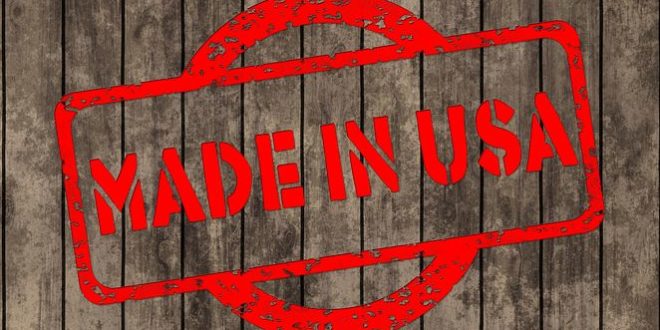Why Should You Care?
“Made in America,” “Buy America,” “Buy America,” American Recovery and Reinvestment Act, Made in the USA, Assembled in the USA…why should you care? Are these all the same? What do all of these mean and what is the difference? It can all be very confusing. Some of these terms are used to identify the origin of manufactured products while others identify specific United States governmental (federal, state, or local) requirements regarding materials used on projects. One of the first was “Buy America” from 1933, which was enacted to stimulate the economy during the Great Depression and more recently “Buy America” from 2009 which was enacted to stimulate the economy during the Great Recession.
While all projects may not require products that meet the requirements of “Made in America,” there are other considerations that need to be evaluated that may lead someone to pick these products over similar imported products. Manufactured goods made in the United States dominated the world marketplace after World War II. The world sought out the products we made domestically because they represented the pinnacle of quality and innovation. Because of this worldwide demand, workers with just a basic education were able to find good jobs that provided enough in most situations to support a family with a single income. It was these good-paying jobs that built the middle class which is the foundation of our country’s current economy. Our position at the summit of manufacturing remained unchallenged for multiple decades, but during my lifetime domestically based manufacturing has been on a decline. The fourth quarter of the previous century saw the rise of Japan as a manufacturing powerhouse. Then as we moved out of the 20th century and into the 21st century, we have seen South Korea, India, and former communist countries in eastern Europe attract attention. The two heavyweight challengers currently in the ring are obviously the United States and China, but we are no longer the clear favorite and despite, political rhetoric, there is no simple solution.
The United States, with the help of industry organizations like the American Fire Sprinkler Association (AFSA) and the National Fire Protection Association (NFPA) and other entities like Underwriters Laboratories (UL) and FM Global, have literally written the standards related to the preservation of life and property in a fire; and the world tends (although slowly at times) to follow our lead. Through trial and error, research and experimentation, testing and retesting, we have become the authority and as a result, the “Made in the USA” or “Made in America” label conveys much more than patriotism. In a strictly regulated industry such as ours, it also stands for quality, innovation, and reliability. There can be a marked difference between what is “Made in America” versus what is made overseas. AGF and other manufacturers making products domestically and maintaining the UL and FM marks, which most products in our industry require, have subjected those products to rigorous UL and FM testing, and have quality control standards that inspects and tests every part. Additionally, the domestic facilities in which we manufacture are subject to quarterly UL and FM inspections. Unlike foreign UL and FM inspections where the inspectors need to schedule an appointment and are often accompanied by an official of the government, domestic inspections are unannounced and random. As a manufacturer of products that are proudly “Made in America,” we do not consider this an intrusion to our business but rather an asset to our own quality assurance infrastructure. Compliance with such stringent quality assurance/quality control (QA/QC) procedures is what lends credibility to being labeled American-made.
Commerce is complicated and in constant flux. Now more than ever trade deals, tariff wars, and political unrest have caused uncertainty in global supply chains and business in general. Despite all the varied political positions, we can all agree that we want the United States to prosper and to provide a future for our families. So now more than ever, AGF Manufacturing is proud to produce products that are “Made in the USA” and we hope our competitive advantage is a brand that is synonymous with products that are high quality, reliable, and code compliant.
AGF Manufacturing is a family-owned business founded more than 30 years ago by my father, George J. McHugh III, who designed and patented the TESTANDRAIN® valve in 1988. AGF has always believed we have an obligation to our employees, their families, and our community to produce the best possible products for our industry to help save human life and property. Our engineers do extensive research and we gather input from contractors, designers and our distributors to solve common issues and problems associated with the installation and maintenance of sprinkler systems. Most of our initial products like TESTANDRAIN, INSPECTORS Test, and RISERPACK were intended to make the task of designing and installing a system easier for the engineer and installing contractor. Many of our newer products have been developed taking into consideration the system designer, the installing contractor, and the end user.
Proudly selling through industry-specific distributors, AGF’s fire sprinkler products are shipped all over the world. Even though we are an extremely small portion of our country’s domestic export, we are proud to be able to contribute. Being an American manufacturer for over 30 years, we have had to ride the economic waves. The products we produce support not only our employees, but also our distributors, the contractors that specify and install our products, and communities that we live and pay taxes. Our commitment to innovation and quality has thankfully allowed us to produce products in the United States. We have remained family-owned and take great pride in supporting U.S. workers and the products we produce for the fire sprinkler industry.
Hopefully, I have answered the first question, why should you care about “Made in America.” As for the remaining questions, the Federal Trade Commission (FTC) has laws and guidelines to help businesses know when it’s appropriate to use the “Made in the USA” or “Made in America” label. There are several factors that are considered, depending on the origin of raw materials and the type of product produced. Because the FTC’s principal mission is to prevent unfairness and deception in the marketplace, the agency authored a 42-page publication on the subject titled Complying with the “Made in the USA” Standard. Available at ftc.gov, it answers basic questions such as which products the policy applies. I warn you that it is not a fascinating read. Bottom line is, the FTC’s goal is to help consumers trust the labels they see and choose the products that best meet their needs then as a company that has proudly made products domestically for over 30 years, we applaud this goal.

ABOUT THE AUTHOR: Jim McHugh is president of AGF Manufacturing, Inc., a family-owned business in Malvern, Pennsylvania, founded in 1986 by his late father, George McHugh III. Involved with AGF from its inception, McHugh is committed to the fire sprinkler industry and joined AGF full time after graduating from college. His involvement is comprehensive, ranging from marketing, production, operations, and sales to development of patented fire sprinkler products. McHugh is an active member of AFSA and its Manufacturers/Suppliers (M/S) Council; a member of the Inspection, Testing and Maintenance Committee for NFSA; and participates in NFPA and the Society for Fire Protection Engineers (SFPE).
EDITOR’S NOTE: Do you promote your products as “Made in the USA”? Under the law, some products must disclose US content. For others, manufacturers and marketers who choose to make claims about the amount of US content need to know about the FTC’s Enforcement Policy Statement on US Origin Claims. Is your company up on what’s required? Visit ftc.gov/tips-advice/business-center/advertising-and-marketing/made-in-us to learn more.
 Sprinkler Age A Publication of the American Fire Sprinkler Association
Sprinkler Age A Publication of the American Fire Sprinkler Association
